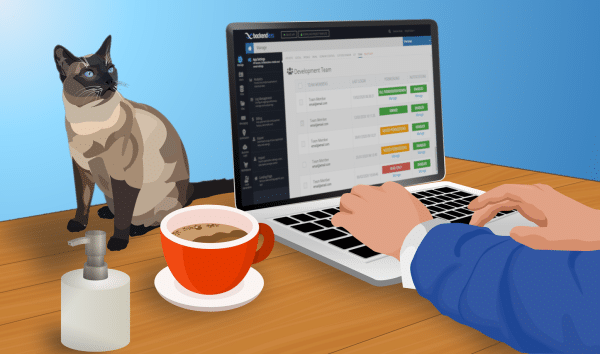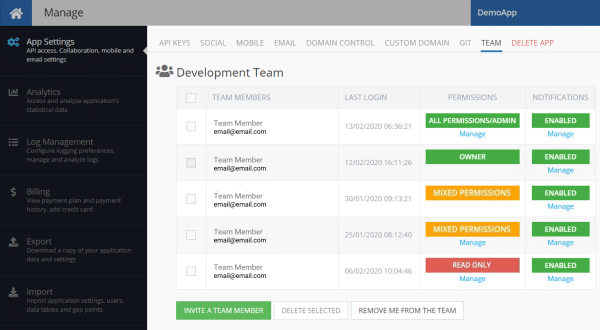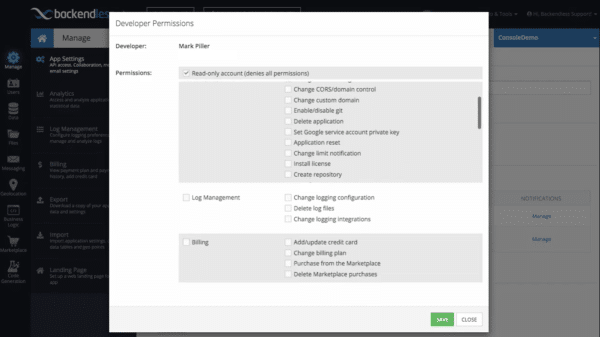5 Keys To Managing A Remote Development Team In Backendless

Remote work, particularly for technology-based jobs, is the new normal as the world grapples with the novel coronavirus. This creates many new challenges for teams that are used to working together on-site. It’s more important than ever that your team’s technology be the solution, not the problem.
In this article, we are going to discuss what we believe are some of the most important aspects of leading a remote dev team.
1. Communicating With Your Team
Communication is vital in this chaotic time. Ensuring that your team members are all on the same page is critical to effective development.
Many team members may be forced to work different hours due to child care and senior care needs. Where many teams that worked together in person could have daily scrums, those meetings may be going online now.
Applications like Slack and Zoom are more valuable now than ever. Making sure your team remains moving in the right direction at all times might require more micromanagement now than before.
Daily status reports, along with task-tracking tools like Trello and Jira can help teams stay on track.
2. Adding Team Members
While most brick-and-mortar businesses are freezing hiring or even downsizing, the same isn’t necessarily true for internet-based businesses.
Because teams can easily work remotely, there are still going to be opportunities to grow the development team. When a new team member is brought on board, it’s critical that the team leader have the ability to grant access to the project in a quick, secure way.
Adding a new team member should be possible with a few simple clicks, as in Backendless:
3. Restricting Team Member Access
Security is the operative word when it comes to bringing on new team members. The last thing you want is a new hire – or even an existing team member – to make changes to something they’re not supposed to touch.
Ideally, new team members will be added with a very low level of access to your key areas. In Backendless, new team members begin with “read-only” access automatically. This means they won’t be able to affect your backend until you allow them to.
If your team does their work offline before submitting to a GitHub commit, for example, these issues are easy to avoid but require a great deal of double-checking.
If, on the other hand, your team works in the same online platform, it can be much tougher to prevent a team member from getting into something they shouldn’t. This is where developer permissions become essential.
Backendless, for example, allows the app owner and admins to choose exactly which portions of the app can be accessed by each team member. This prevents unauthorized access to any part of the app you choose and gives the team leader added peace of mind.
4. Blocking Out Restricted Areas
You may want to go even further when restricting access. Perhaps you need to give your support team or customer service team access to your customer database. Even if you limit access, you may not even want those team members to be able to see what you deem off-limits.
This can be particularly necessary if you are bringing in freelance developers for smaller tasks as you may want to limit how much of your infrastructure a temporary employee can see.
In Backendless, for example, we provide visibility controls that allow the app owner and admins to choose which portions of the Backendless platform are visible to each team member.
5. Removing Team Members
Finally, when the time comes to move team members onto new projects, or to remove temporary team members, removing the team member needs to be easy. There is perhaps no greater security risk than having inactive users with active login credentials.
If it is difficult to remove team members from your development platform, you have a big problem. Administrators should have the ability to move team members off of a project when needed, without having to jump through technical hoops.
With Backendless, adding and removing team members is very easy, requiring just a few clicks.
Team-driven development has always been a core tenet of our company. We built the Backendless Platform is built in many ways to facilitate development teams. We believe that app development is a team sport; more team participation and input usually leads to a much stronger application.
To get access to all of the team tools discussed here, try out our Cloud plans or the Managed Backendless and Backendless Pro products.
What other issues are you running into as teams become more remote? What have you done to address them?
We wish you good health and, as always, Happy Coding!

